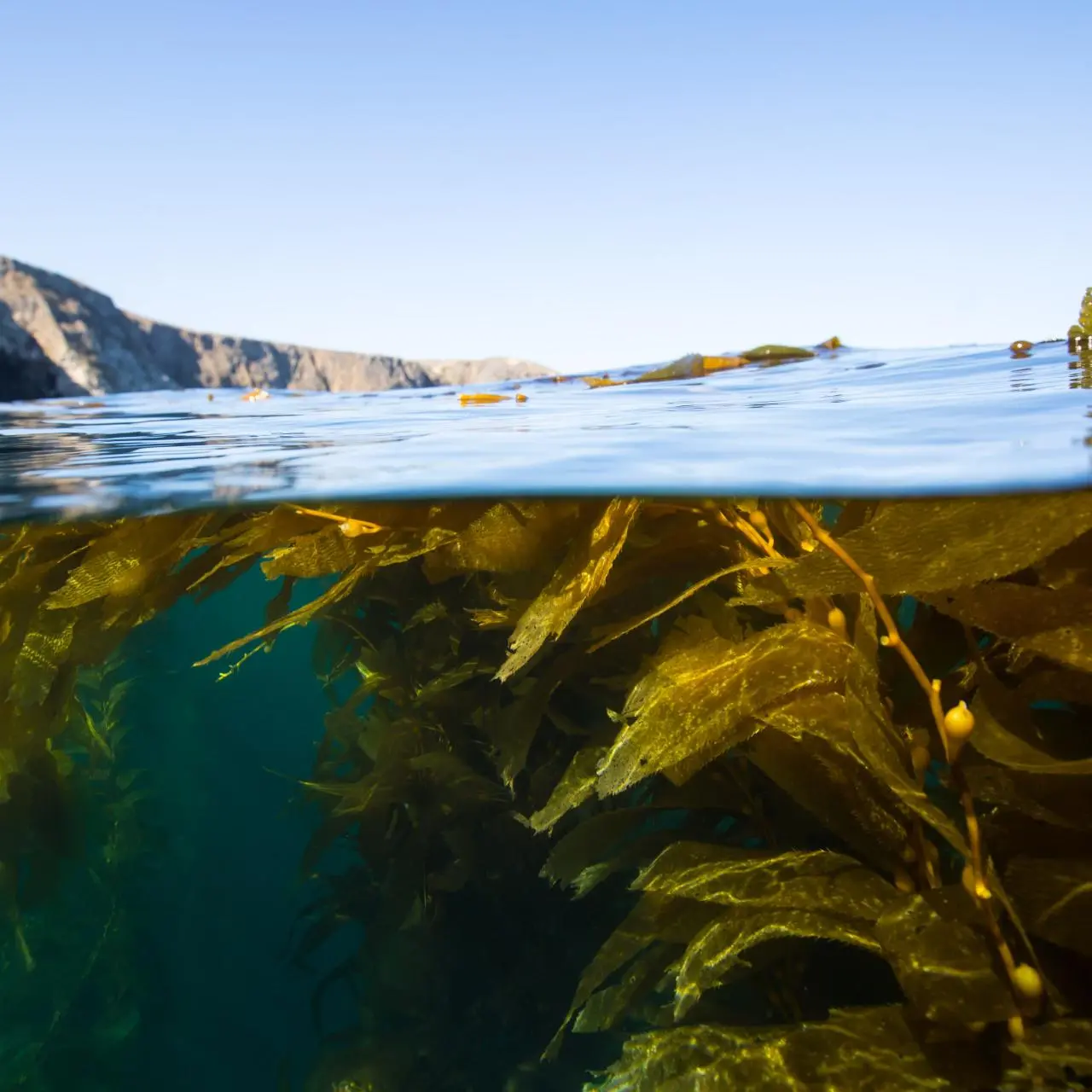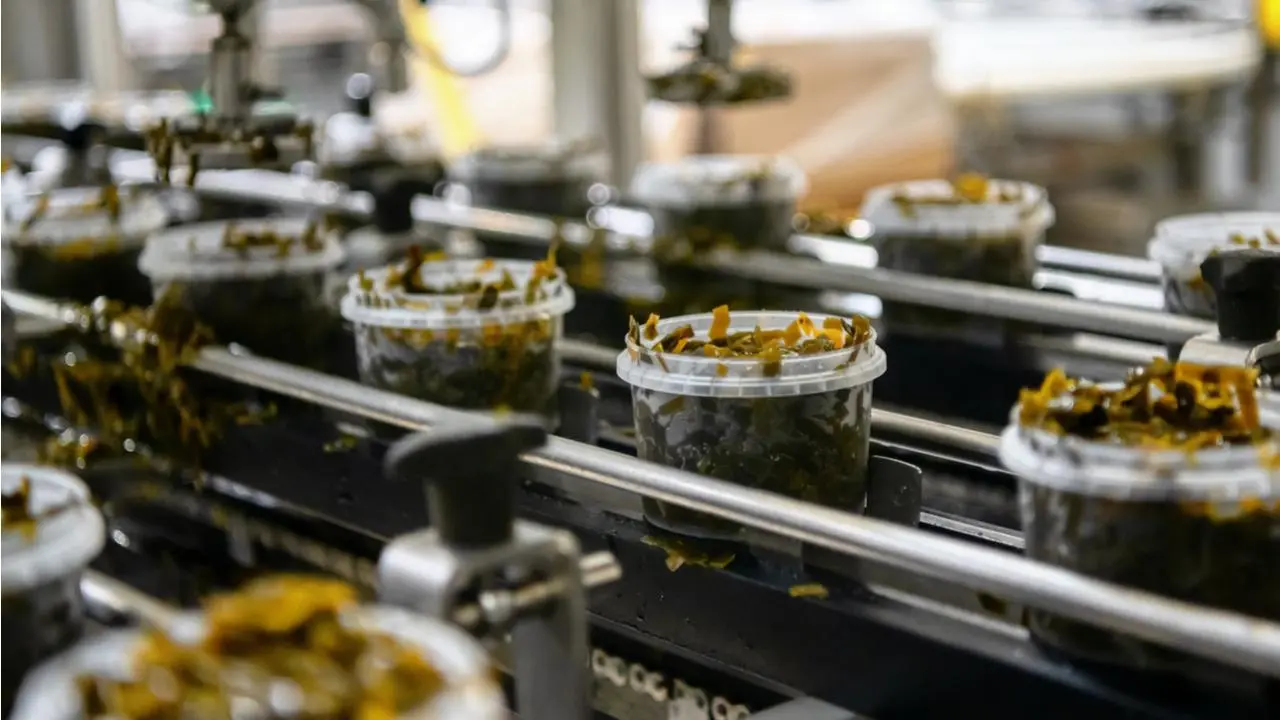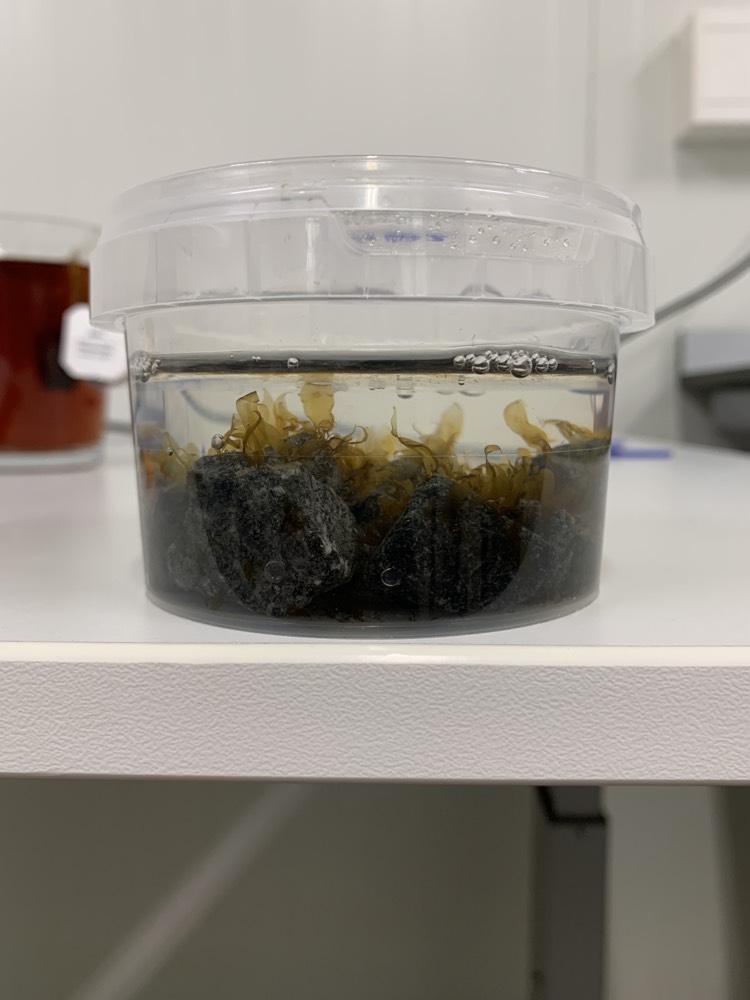To restore kelp forests, we are exploring a novel method that allows for significant scale and cost reduction: direct seeding of kelp seedlings onto hard substrates…
Seaweed
A great untapped resource: from food source to carbon sink to breeding ground for fish
Kelp reforestation in Atlantic waters
Our oceans contain a diverse set of seaweed species, ranging from green to brown to red. In the North Sea region, we mainly focus on restoration of sugar kelp, a brown seaweed that occurs in North Atlantic waters and is popular for its application in food products, cosmetics and biofuels. For nature rewilding purposes, the species is very effective as well, as it strongly enhances local biodiversity, sequesters carbon and nutrients such as nitrogen and phosphorus from the water, and increases fish stocks.

The value of seaweed

Biodiversity
Seaweed, in particular kelp, is an oasis for life. These underwater algal forests provide important habitats for many marine species including kelp crabs, starfish and salmon. Kelp forests serve as a protective nursery as their stripes and blades slow down movement of water, decreasing the chance of fish eggs to drift away to unsuitable habitats.

Water purifier
Seaweed plays an important role in enhancing water quality. It does so by extracting excessive nitrogen and phosphorous from the water. Especially in areas that suffer from eutrophication, sometimes resulting in so called ‘dead zones’, seaweed can improve water quality. Seaweed, for instance sargassum, also captures carbon dioxide during photosynthesis, which directly reduces ocean acidification.

Biobased economy
Various types seaweeds are used in human food products and animal feed. Seaweed is typically high in fibres, proteins and vitamins and contains 10 times more minerals than land-based plants. Its nutritional characteristics and fast growth rate make seaweed an attractive resource for our sustainable plant-based diets and a biobased economy.
Sargassum blooms and kelp forests

